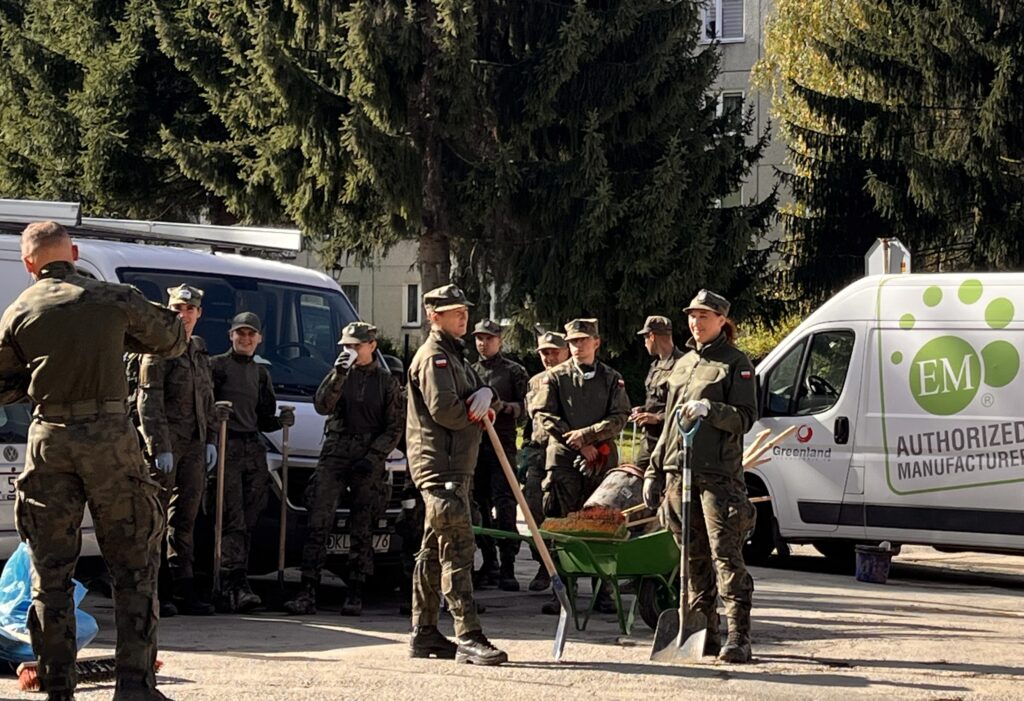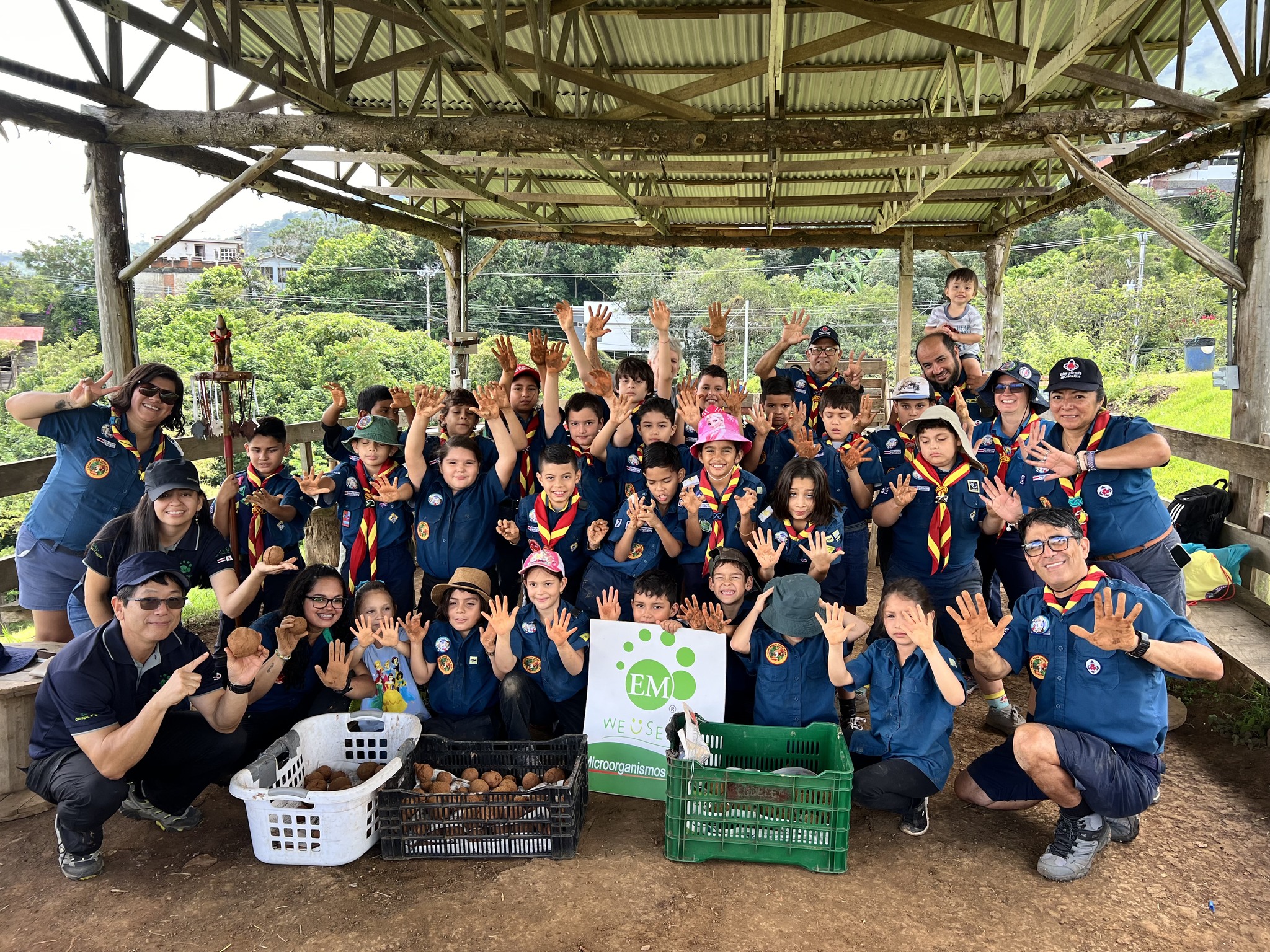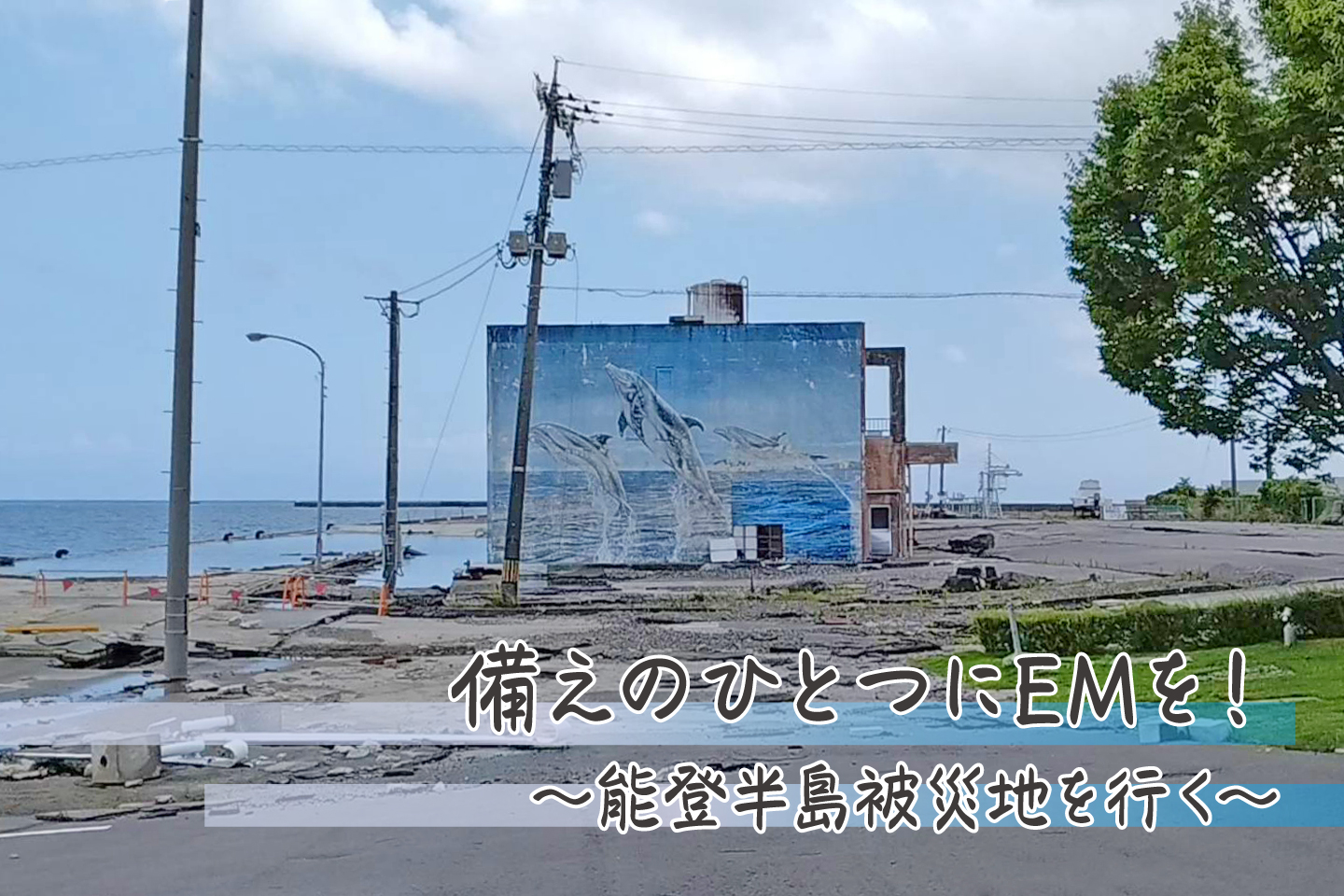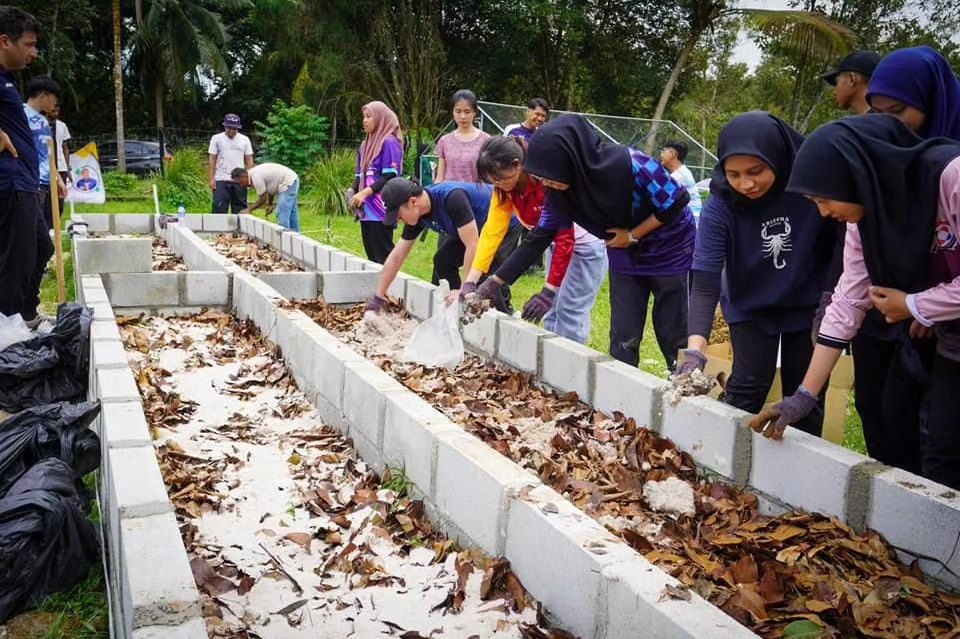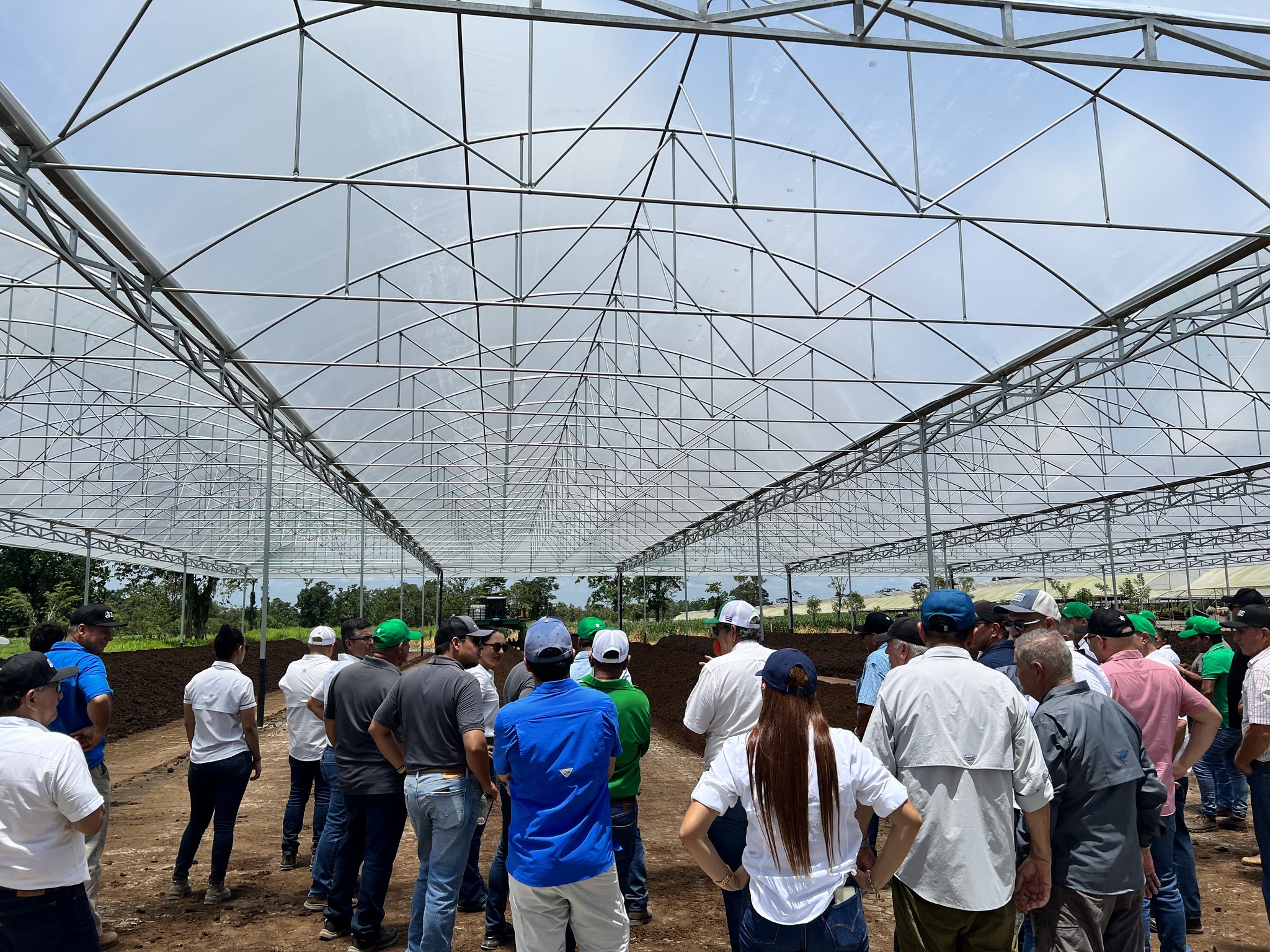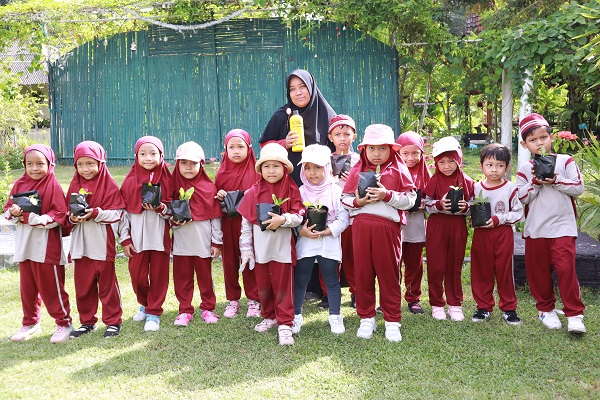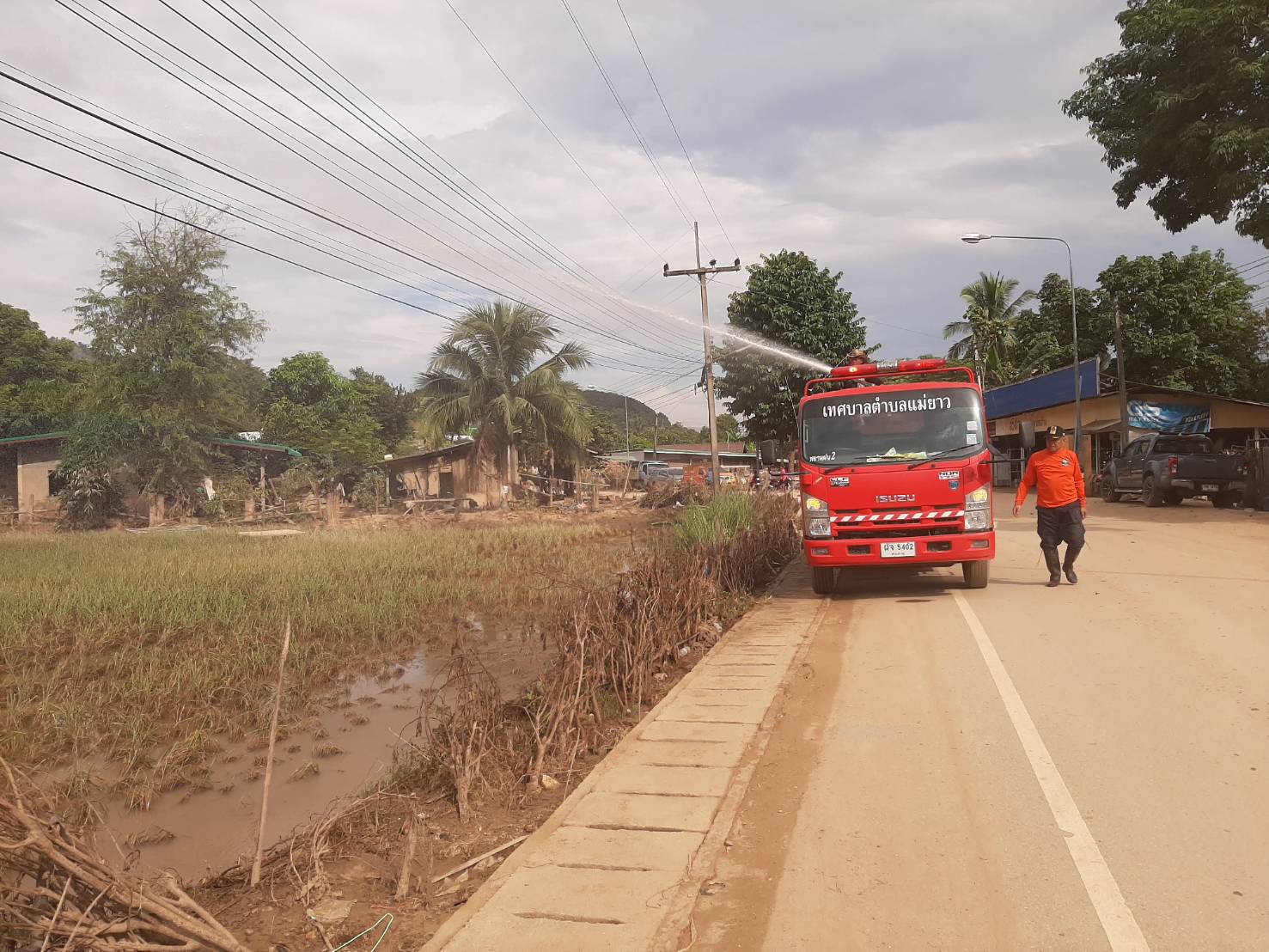Case Studies
EM for Sustainable Society
Cajica City, Colombia
Household Waste Management in Cajica City, Colombia
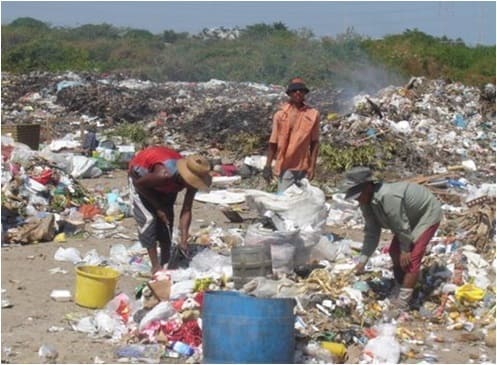
EM Technology was first introduced in Colombia in 1997 and promoted under the Catholic organization "Minuto de Dios" and then FUNDASES, a division of "Minuto de Dios", took over the manufacture and promotion of EM Technology based in Bogotá, the capital city of Colombia.
The environmental impact for the bad management of household waste is causing serious pollution to the soil, water, air and human as well in Colombia.
The environmental impact for the bad management of household waste is causing serious pollution to the soil, water, air and human as well in Colombia.
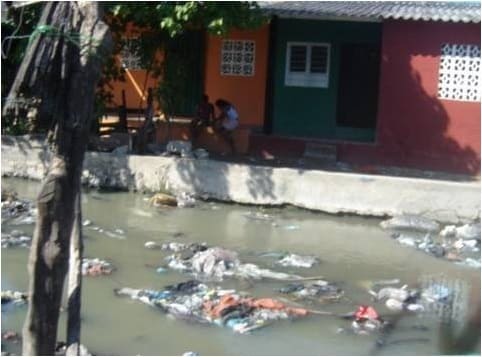
This is the case of Cajica city of 55,000 habitants that decided to cope with the problems of waste produced at the city level in 2008
First of all, Fundases along with local officials approached an education program to get residents conscious of the importance of separation and reuse of waste.
Therefore, they focused especially on the following subjects:
1. Involve the educational sector as well as the community at all.
2. Education of the community
3. Call for the actively participation of residents
4. Set up infrastructure
5. Application of biotechnology (EM Technology)
First of all, Fundases along with local officials approached an education program to get residents conscious of the importance of separation and reuse of waste.
Therefore, they focused especially on the following subjects:
1. Involve the educational sector as well as the community at all.
2. Education of the community
3. Call for the actively participation of residents
4. Set up infrastructure
5. Application of biotechnology (EM Technology)
Training Leaders for a Sustainable Program
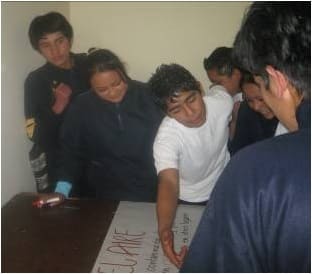
To increase awareness and promote education in the community, they started with a group of students who were responsible for training 25 households. These students learned how to organize the community for applying EM Technology as well as environmental aspects.
Community Training & Community Participation
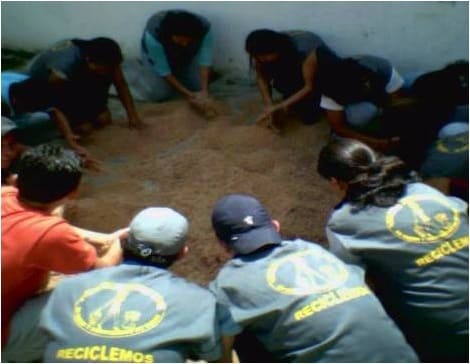
This program held to train residents on fields of environment pollution, take advantages and use of EM Technology with the purpose of change residents’ attitude toward separating household waste.
Community participation is one of the most important activity. Success of the project depend on the start and continuously evaluation of the process carried by the residents. The community all has to evaluate each stage and propose solutions for any problem held during the process.
Community participation is one of the most important activity. Success of the project depend on the start and continuously evaluation of the process carried by the residents. The community all has to evaluate each stage and propose solutions for any problem held during the process.
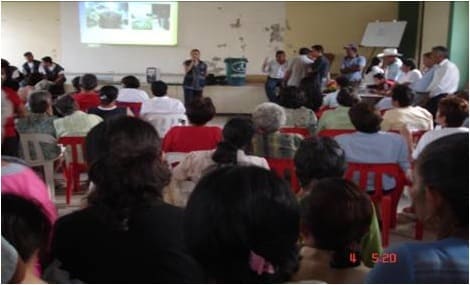
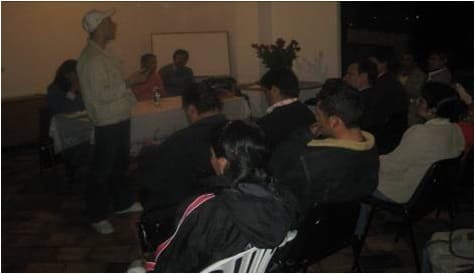
Classification of Organic Waste and Application of EM Technology
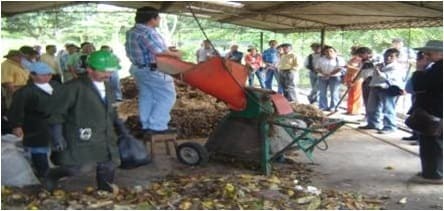
Each house has to be provided with a plastic bucket for kitchen waste especially made with small holes for draining liquid produced by the accumulation of waste. The liquid part is also used at the house drainage to treat waste water at the same time and reduce water contamination.
The kitchen waste must be treated from each house to prevent bad odors and flies.
The kitchen waste is treated with EM Bokashi which is the key point to ferment the waste and avoid the emission of bad odors. EM Bokashi must be added into the bucket each time new waste is introduced in it.
The kitchen waste must be treated from each house to prevent bad odors and flies.
The kitchen waste is treated with EM Bokashi which is the key point to ferment the waste and avoid the emission of bad odors. EM Bokashi must be added into the bucket each time new waste is introduced in it.
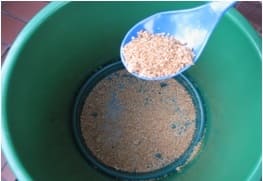
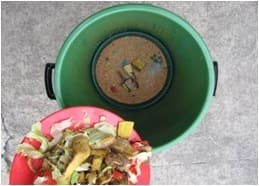
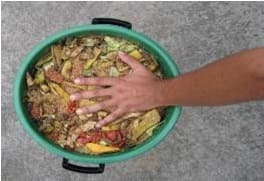
Collection of Separated Household Waste
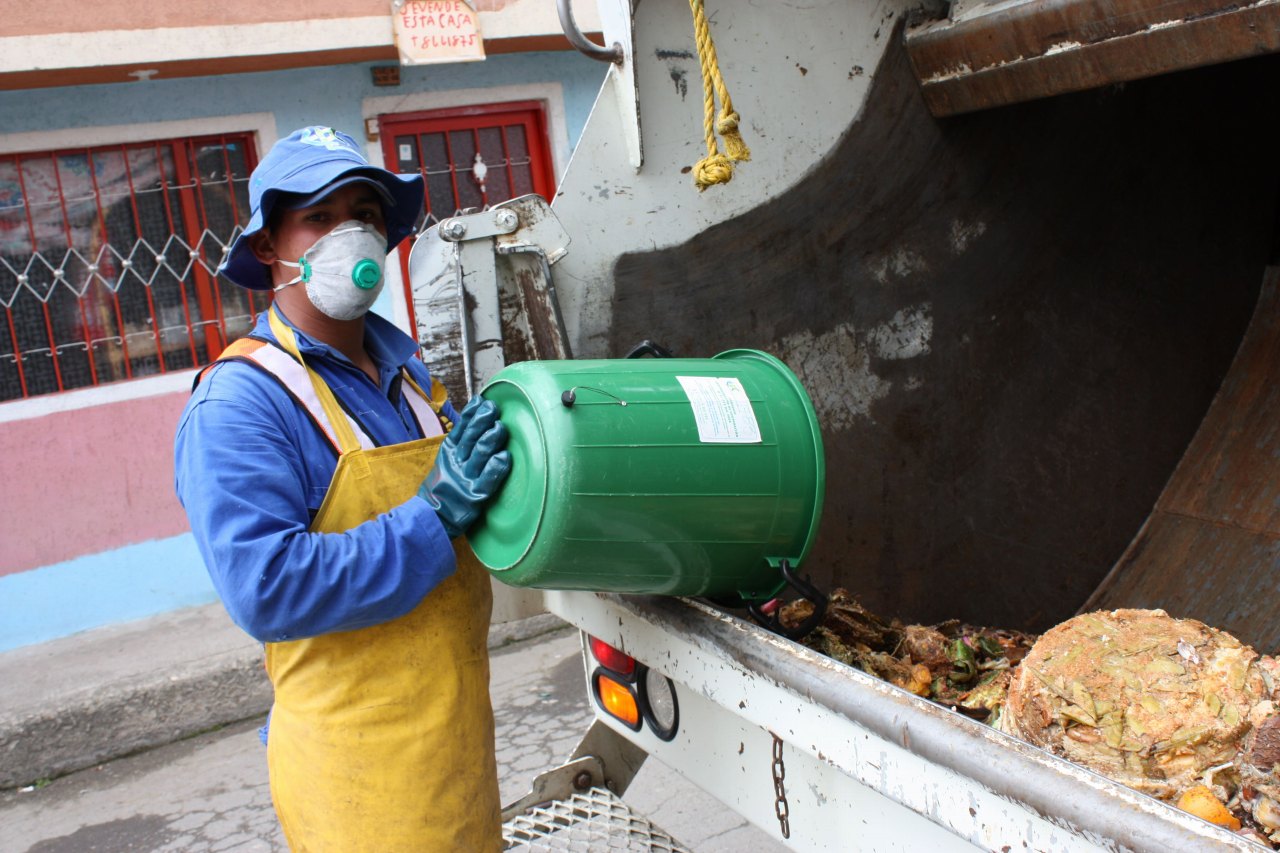
Once a week the kitchen waste processed in the plastic buckets, is collected to be carried to the compost production site.
Training: Compost Production, Food Safety
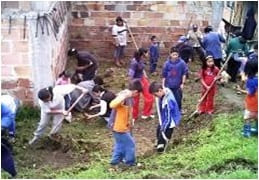
This is an easy process to make EM Compost from the kitchen waste that is crashed and sprayed with Activated EM・1 (AEM). The mixture is set in piles and keep it for further fermentation.
These piles must be turned over according to the temperature (must be more than 60° C and less than 70° C) and after approximately 50 days, the compost is ready to use for growing vegetables. AEM must be applied every time the pile is turned over.
Food production is now implemented in the poorest sector and supported by the government to warranty food safety.
Today, families are deeply involved in food production since they realized that what before was a pollution factor, now is a good fertilizer for growing vegetables and fruits for their own consume and much more, without using any chemicals.
These piles must be turned over according to the temperature (must be more than 60° C and less than 70° C) and after approximately 50 days, the compost is ready to use for growing vegetables. AEM must be applied every time the pile is turned over.
Food production is now implemented in the poorest sector and supported by the government to warranty food safety.
Today, families are deeply involved in food production since they realized that what before was a pollution factor, now is a good fertilizer for growing vegetables and fruits for their own consume and much more, without using any chemicals.
Field Trip Visit of Prof. Higa
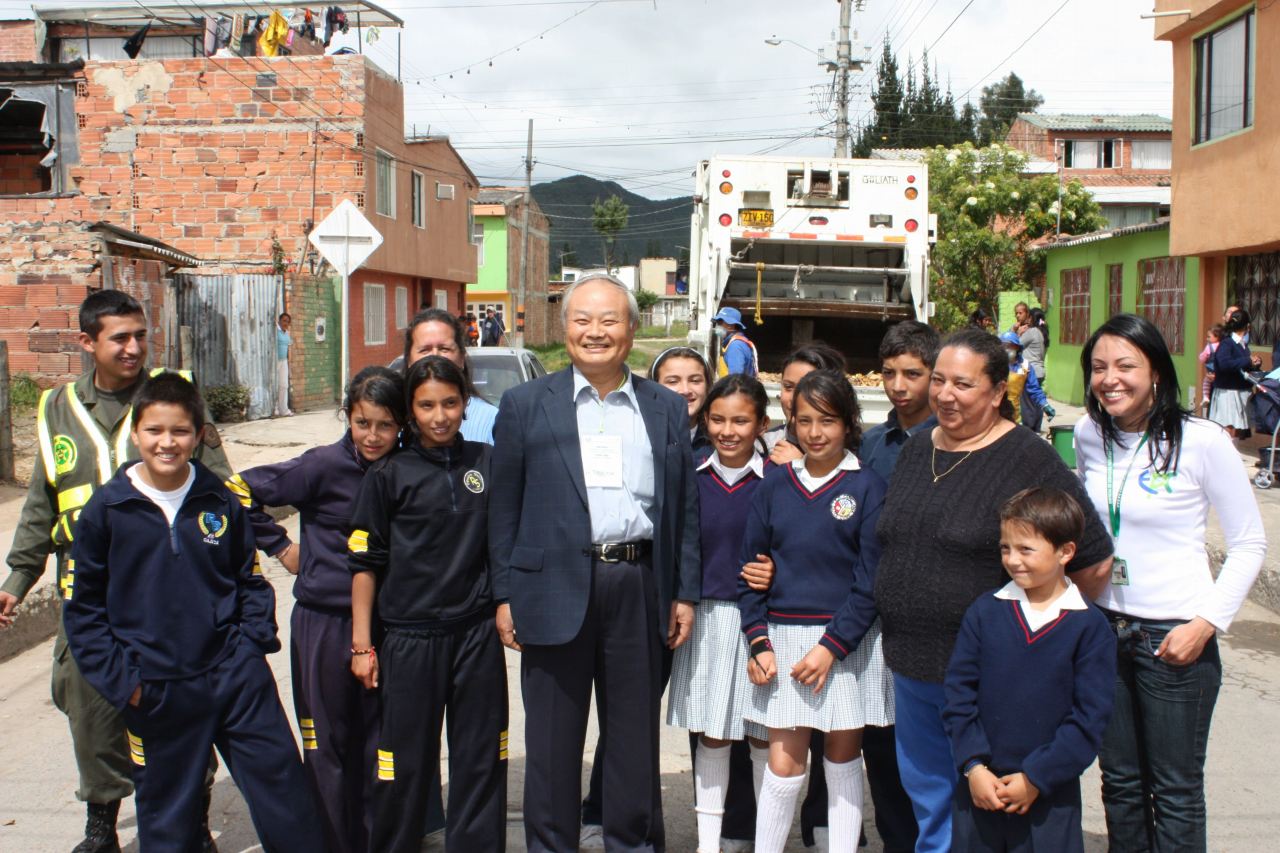
In 2008 Prof. Higa went on vitis to Cajica city and had the opportunity of talk with teachers, students and residents involved in the Household Waste Management program.
The collected garbage from all households (11,000 households, 55,000 citizens) are fully converted into organic fertilizers. Although the program is managed by the City Health Department, training for the community is provided by local school students, who previously learned EM Technology at school.
So, as a part of their curriculum credits, each student visits 5 houses to teach how to use EM Bokashi to process their organic waste. These students are responsible also to control the condition of the kitchen waste accumulated in the buckets.
The collected garbage from all households (11,000 households, 55,000 citizens) are fully converted into organic fertilizers. Although the program is managed by the City Health Department, training for the community is provided by local school students, who previously learned EM Technology at school.
So, as a part of their curriculum credits, each student visits 5 houses to teach how to use EM Bokashi to process their organic waste. These students are responsible also to control the condition of the kitchen waste accumulated in the buckets.
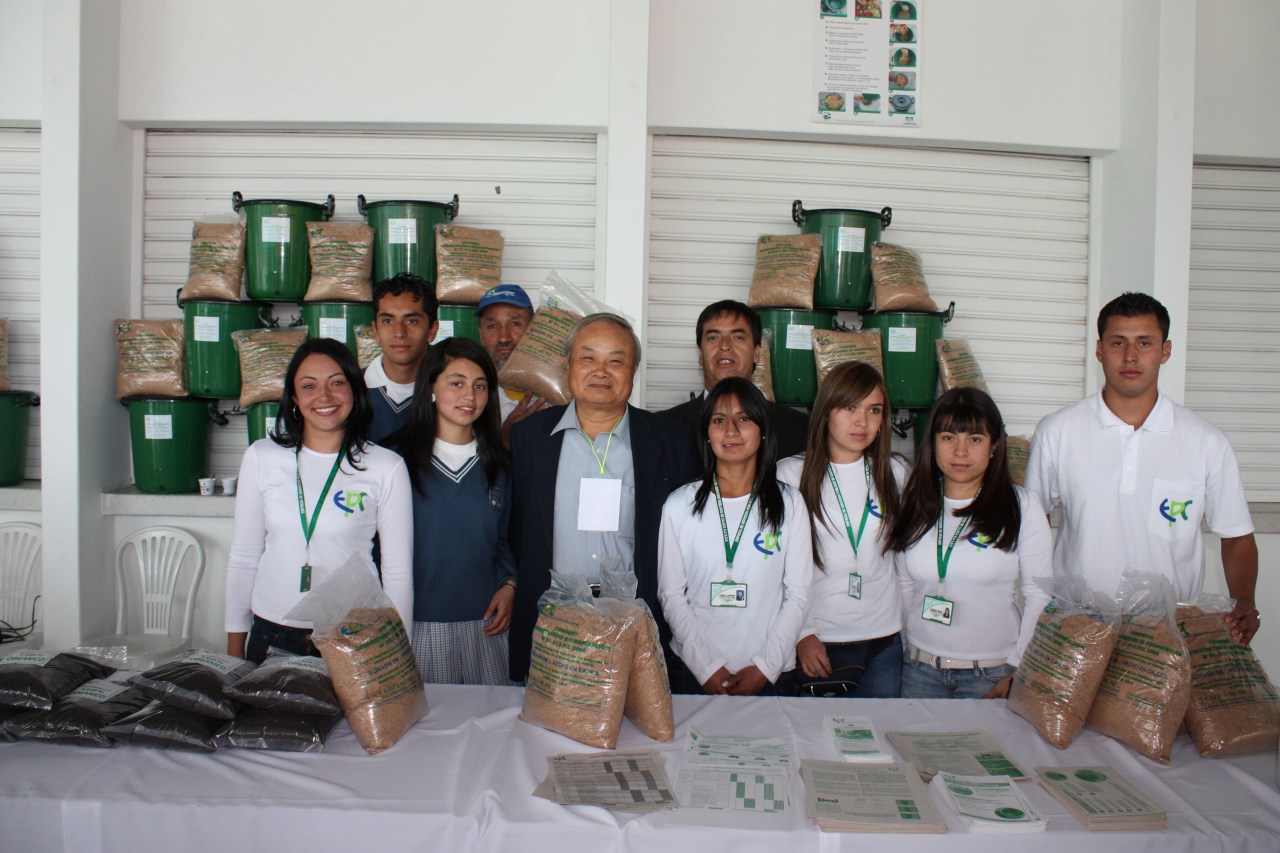
Junior high school students explaining the use of EM Bokashi and buckets at the community event
Today, this project is carried out in other 24 cities in Colombia. The program leads to the public awareness of recycling; at the same time it has impact on decreasing of illegal dumping.
Today, this project is carried out in other 24 cities in Colombia. The program leads to the public awareness of recycling; at the same time it has impact on decreasing of illegal dumping.
The project has been continuous, check out the related article:
EM for Sustainable SocietyⅡ
EM for Sustainable SocietyⅡ
